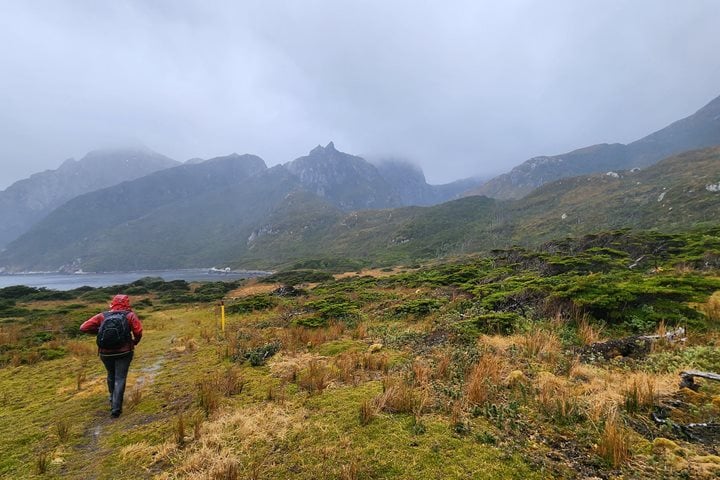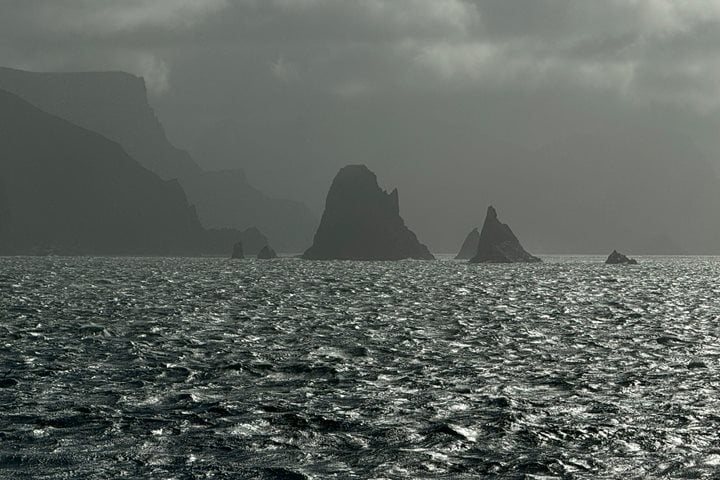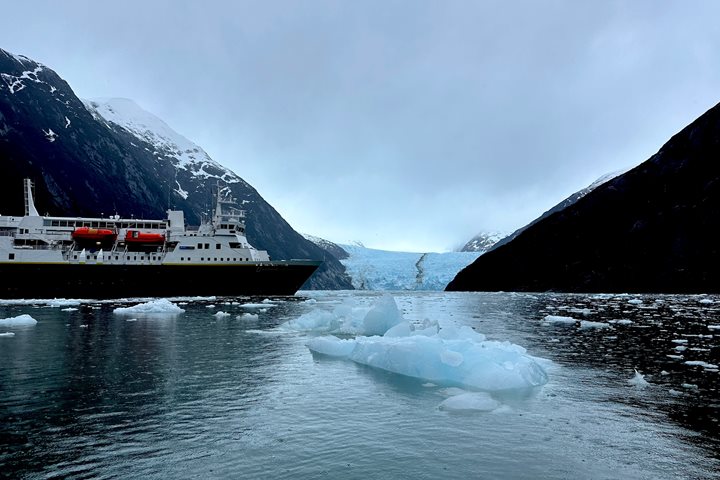A Friday aboard the National Geographic Explorer is quite unlike a normal Friday. Never are workers dull, waiting for 5 pm, excited for the weekend. Aboard the ship no one knows what day of the week it is, naturalist staff wake up alert and excited for the day, eyes gleaming for the promise of new adventure.
The morning began with fantastic Zodiac tours by the natural history staff at the face of Garibaldi Glacier. Glacial activity is a spectacular thing to witness, whether with eyes or with ears. The deafening roar of massive, dense ice calving off and the visual explosion to match are unparalleled elsewhere in nature. Glaciers are also hubs for marine and aerial activity. The super cold water is extremely oxygen rich, resulting in an ideal habitat for the plankton community. These small plants and animals, built to follow the current system, act a food source for marine mammals and birds alike. The glacier face creates extreme upwelling events, bringing nutrients and plankton life to the surface. When a large piece of ice calves off the glacial face, this impact into the ocean causes churning of the cold water, mixing nutrients and ocean layers. While marine mammals hunt from below the surface for their meal, seabirds soar above, watching with their powerful eyes for their chance at a small crustacean or a fish that’s been stunned by the blow of a calving. Everyone gets an opportunity to feed here, in this productive environment.
The area was also surrounded by waterfalls. Steep cliffs exposed small channels of precious falling water, glacial in nature. Some coves showed a stream coming down from the hills and into the channel. The spot was magical, and everyone was elated to spend a morning here. The thick productive water, the thundering boom of a calving glacier, and the serene bubbling of freshwater making its way to the salty bay made for a marvelous day here in Southern Chile.







